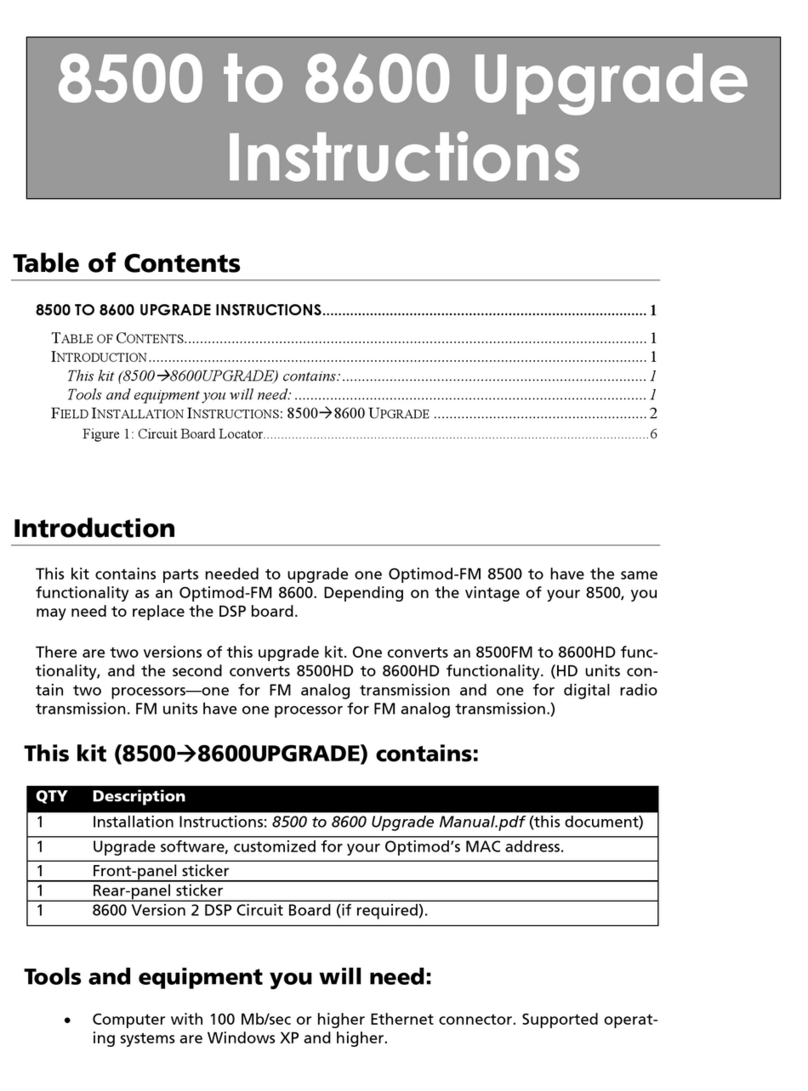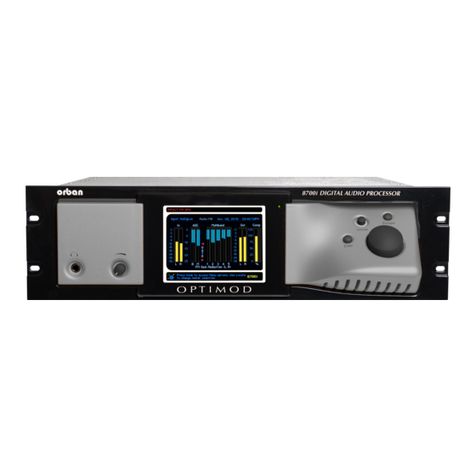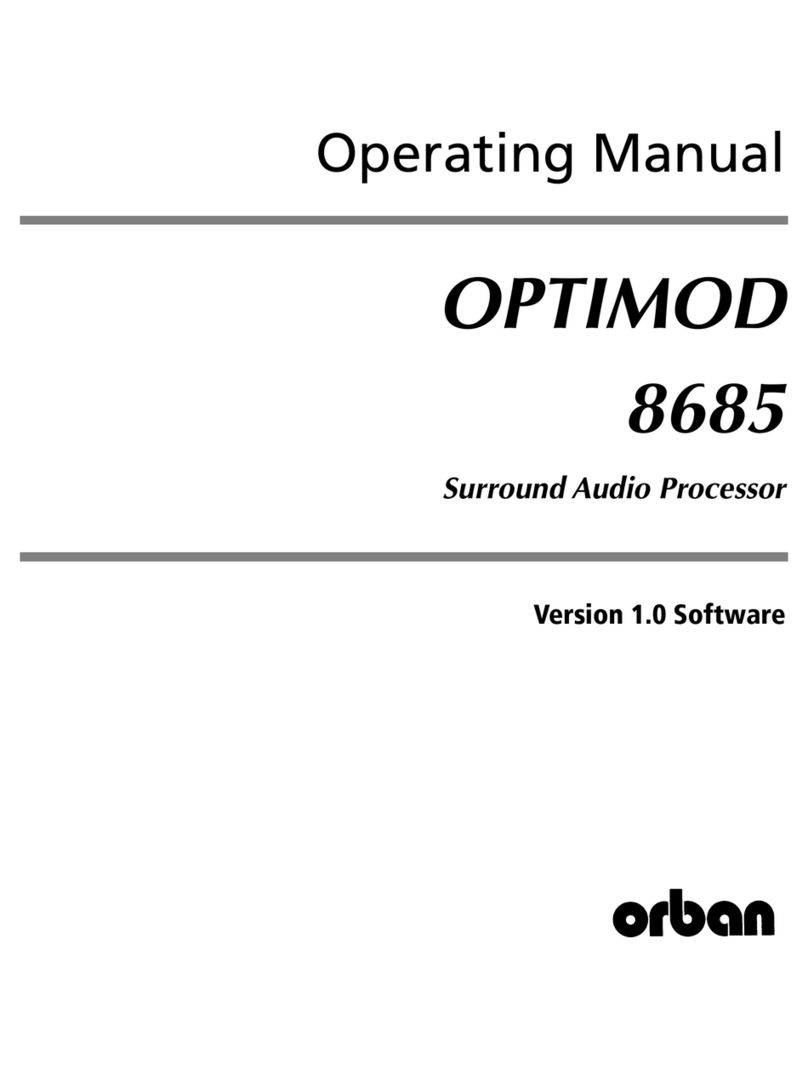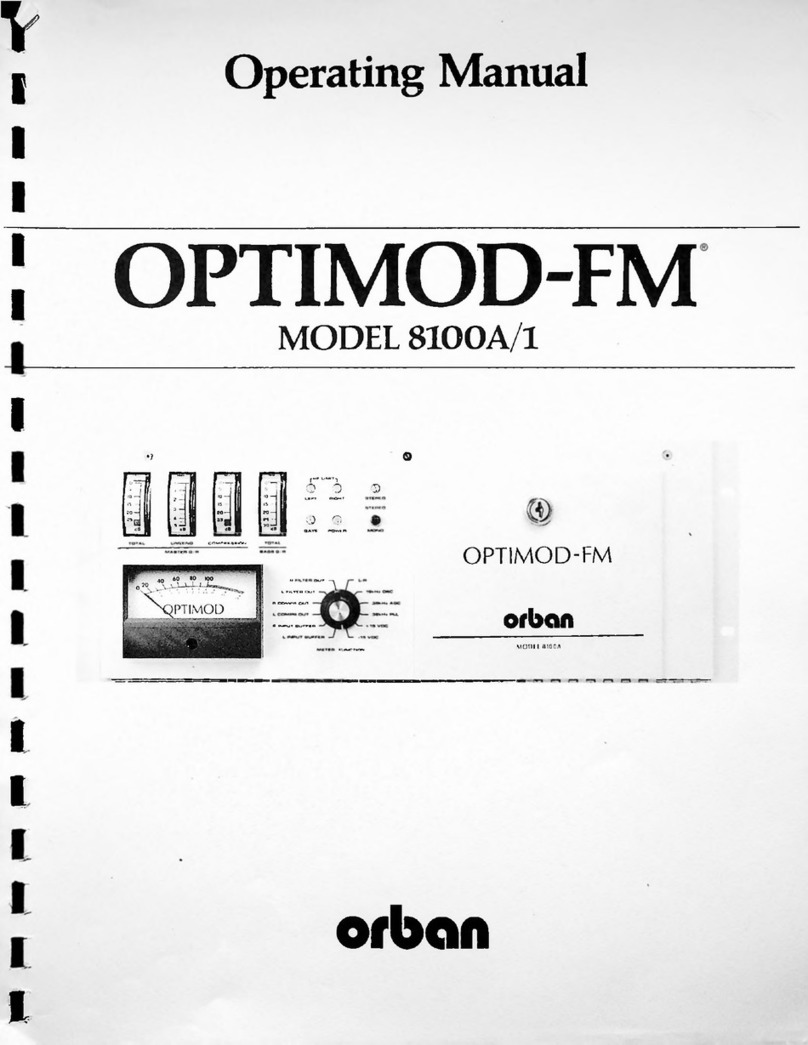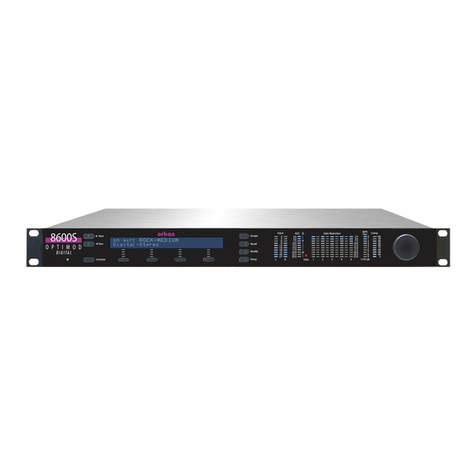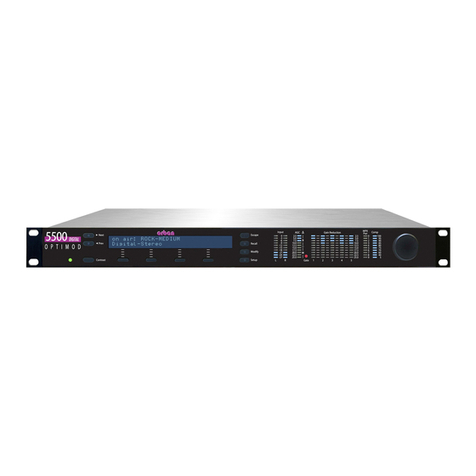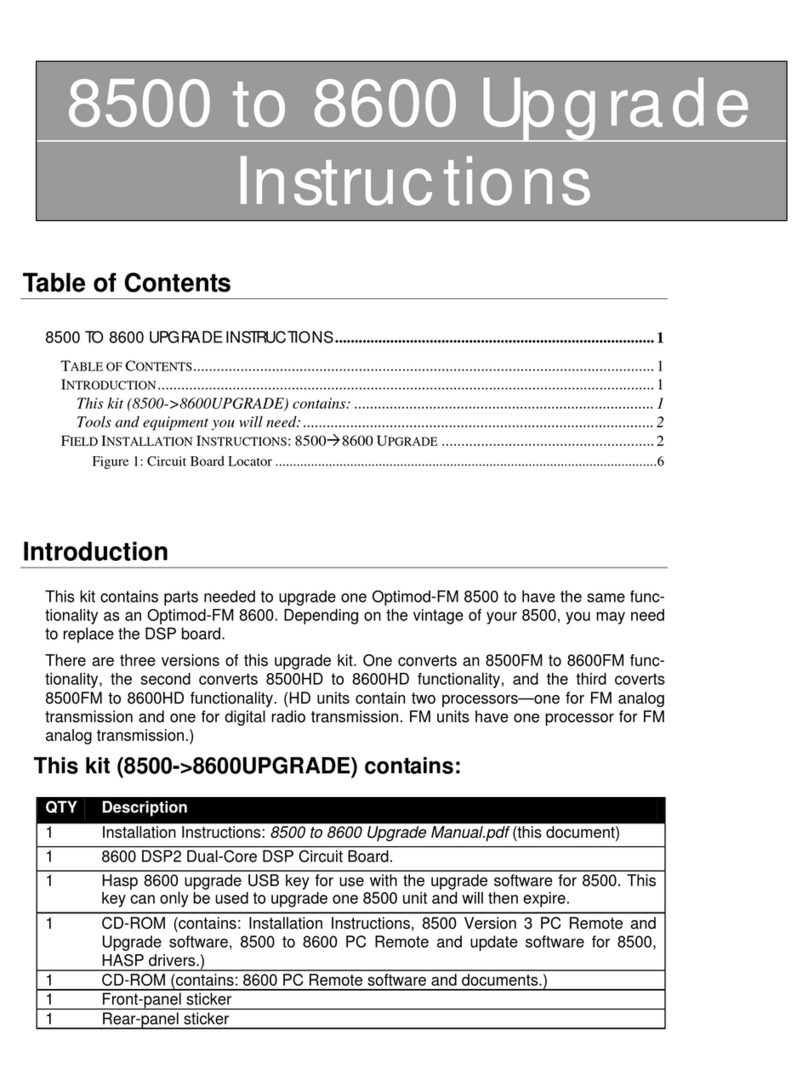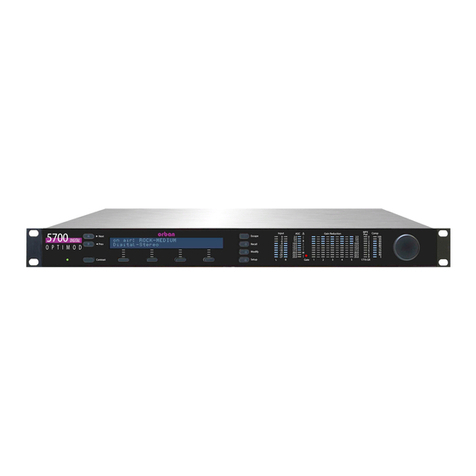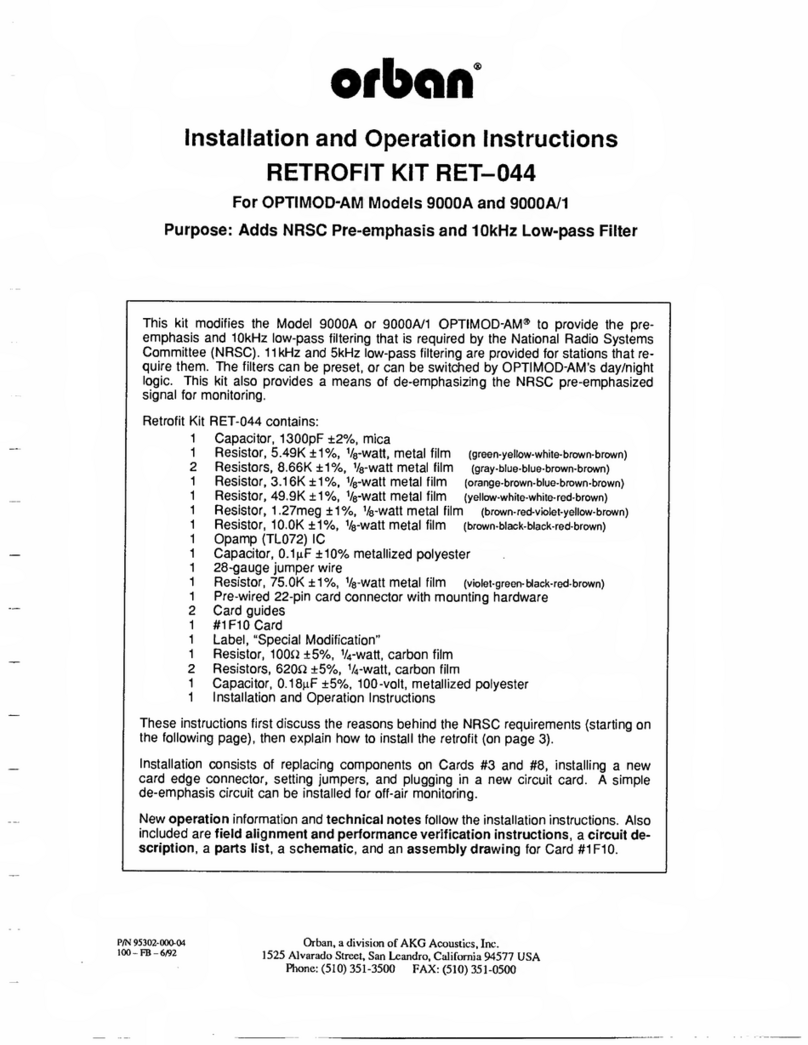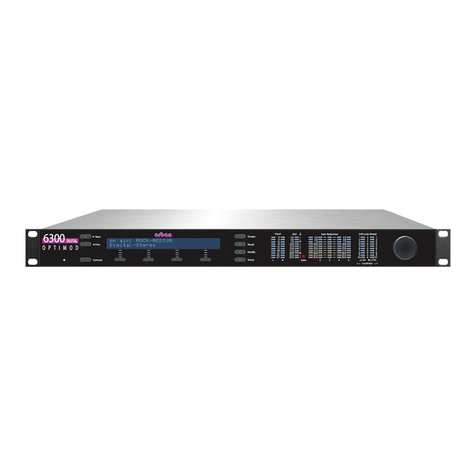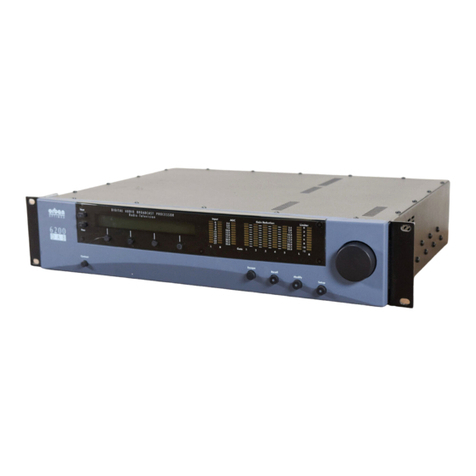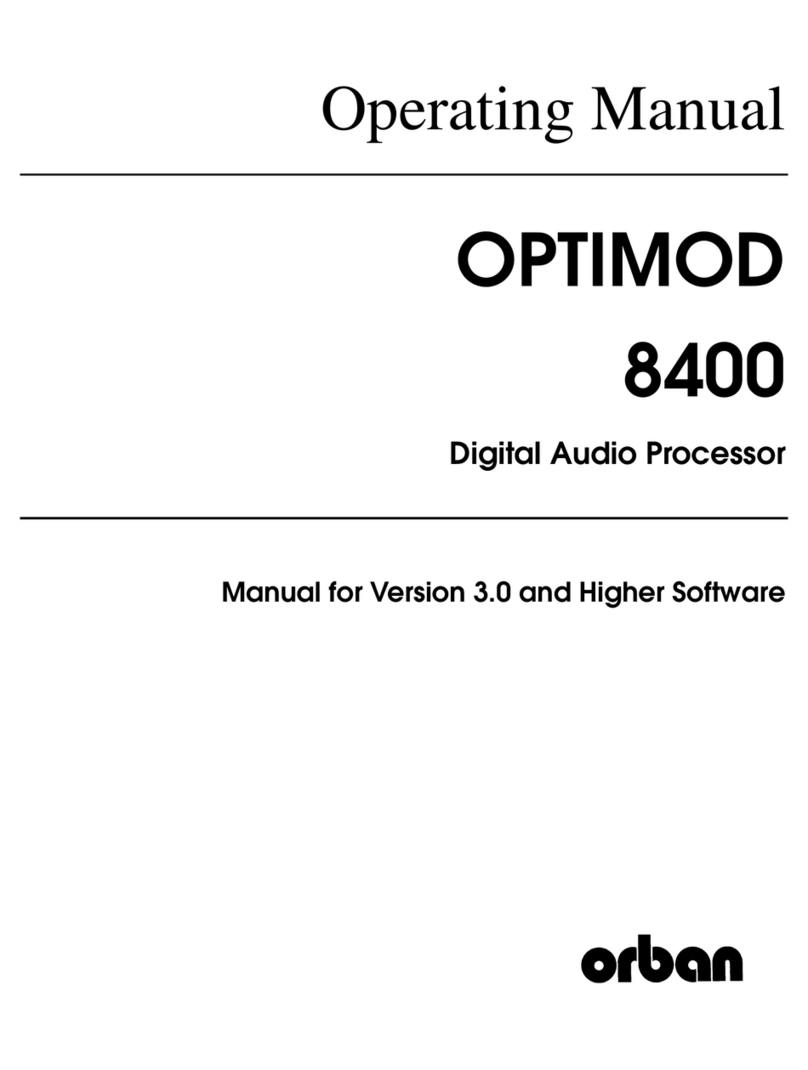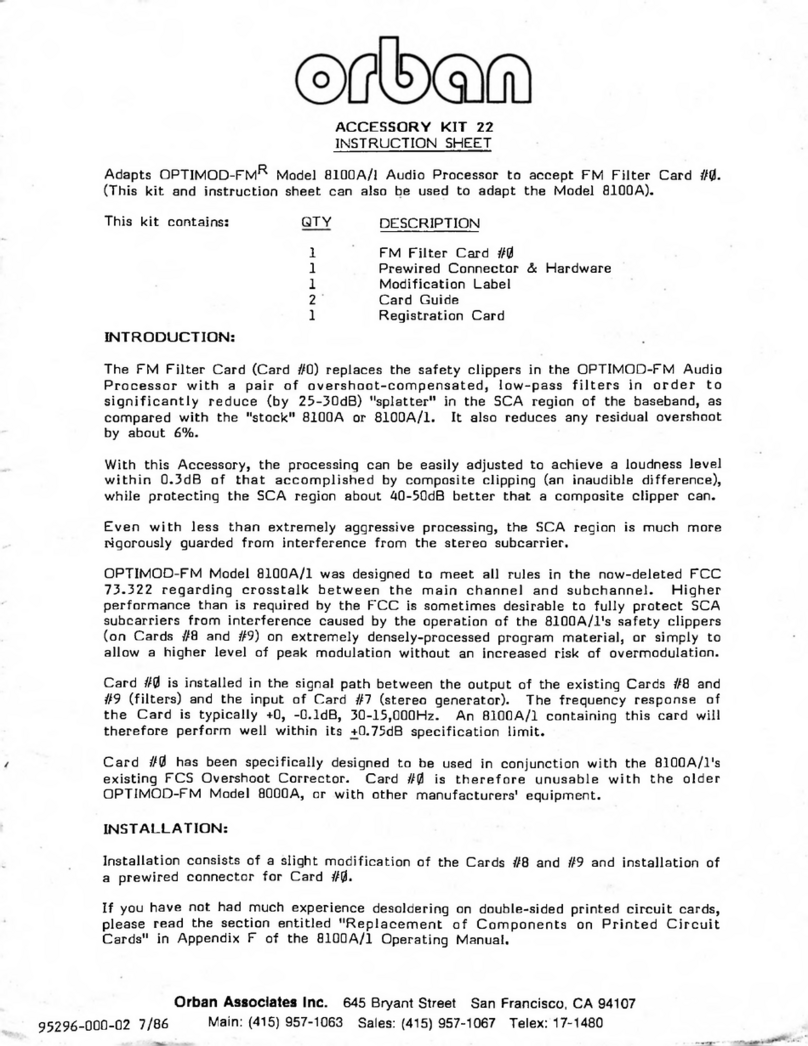O P T I M O D - 5 9 5 0 D I G I T A L A U D I O P R O C E S S O R
µMPX Composite over IP ......................................................................................................................................... 2-20
Wordclock/10 MHz Sync Reference ........................................................................................................................ 2-21
Audio Grounding ..................................................................................................................................................... 2-21
Audio Circuit Grounds ............................................................................................................................................. 2-21
Optically Isolated Remote Control Connections...................................................................................................... 2-22
The 5950 Front Panel............................................................................................................................................... 2-24
Section 3: Operation .......................................................................................................................3-1
Introduction to Processing ........................................................................................................................................ 3-1
Fundamental Requirements: High-Quality Source Material and Accurate Monitoring ............................................ 3-3
About the 5950’s Signal Processing Features ............................................................................................................ 3-4
Customizing the 5950’s Sound ................................................................................................................................ 3-13
Factory Programming Presets ................................................................................................................................. 3-15
Adjusting and using the browser based PC Remote................................................................................................ 3-19
SETTING INPUT LEVELS ............................................................................................................................................ 3-19
HEADPHONE ............................................................................................................................................................ 3-20
Digital OUTPUT 1 (and 2) ......................................................................................................................................... 3-21
STEREO ENCODER .................................................................................................................................................... 3-23
RDS and RBDS .......................................................................................................................................................... 3-29
UTILITY ..................................................................................................................................................................... 3-40
LESS-MORE: .................................................................................................................... Error! Bookmark not defined.
STEREO ENHANCER:................................................................................................................................................. 3-45
AGC (Automatic Gain Control)................................................................................................................................. 3-46
EQUALIZER (EQ) ....................................................................................................................................................... 3-48
MULTIBAND ............................................................................................................................................................. 3-50
COMPRESSORS ........................................................................................................................................................ 3-53
SPEECH MODE ......................................................................................................................................................... 3-54
BANDMIX ................................................................................................................................................................. 3-55
MX PROCESSING ............................................................................................................. Error! Bookmark not defined.
FINAL CLIPPING............................................................................................................... Error! Bookmark not defined.
HD LIMITING ...................................................................................................................................……………………….3-65
RATINGS ENCODER LOOP……………………………………………………………………………………..3-70
Section 4: Maintenance...................................................................................................................4-1
Routine Maintenance ................................................................................................................................................ 4-1
Section 5: Troubleshooting..............................................................................................................5-1

